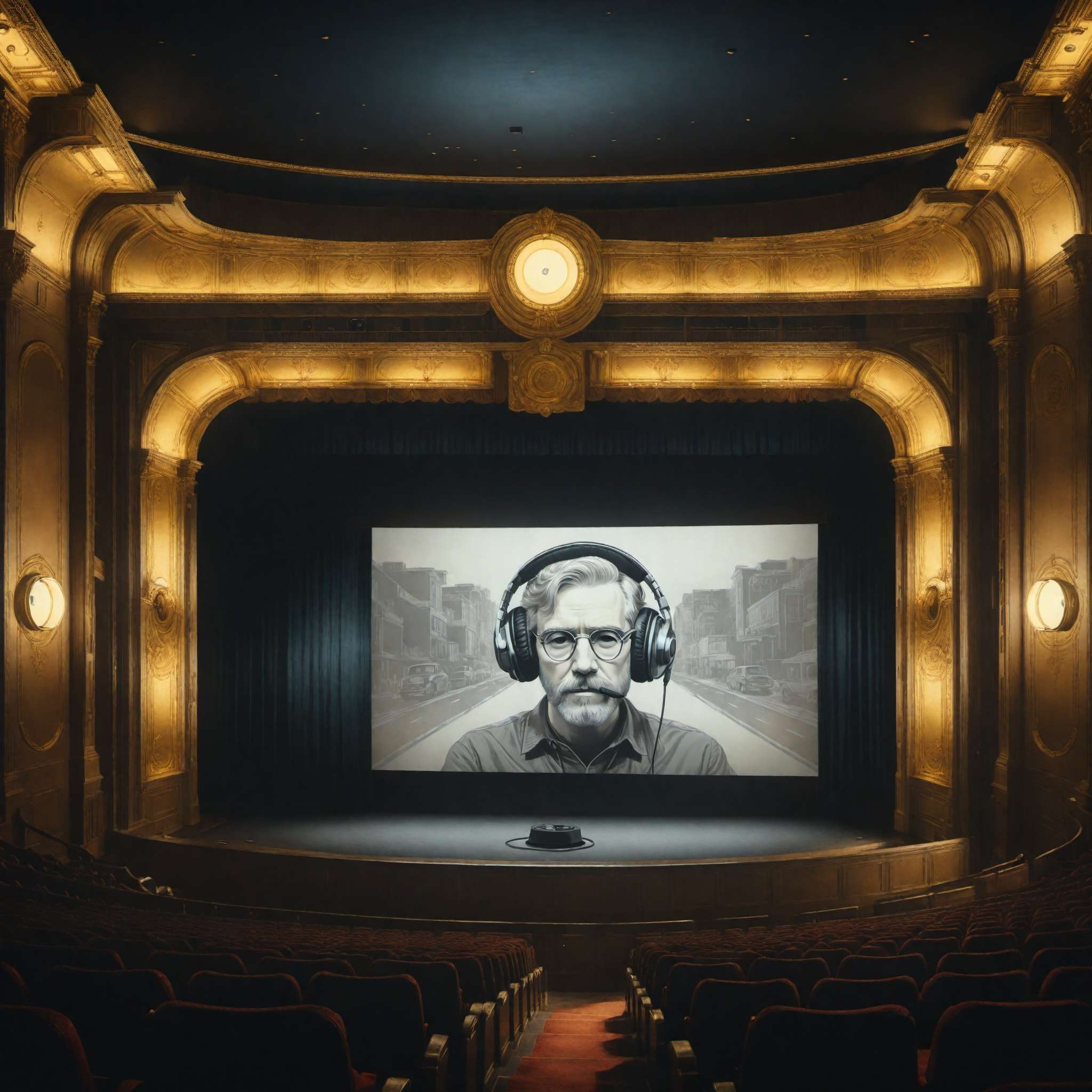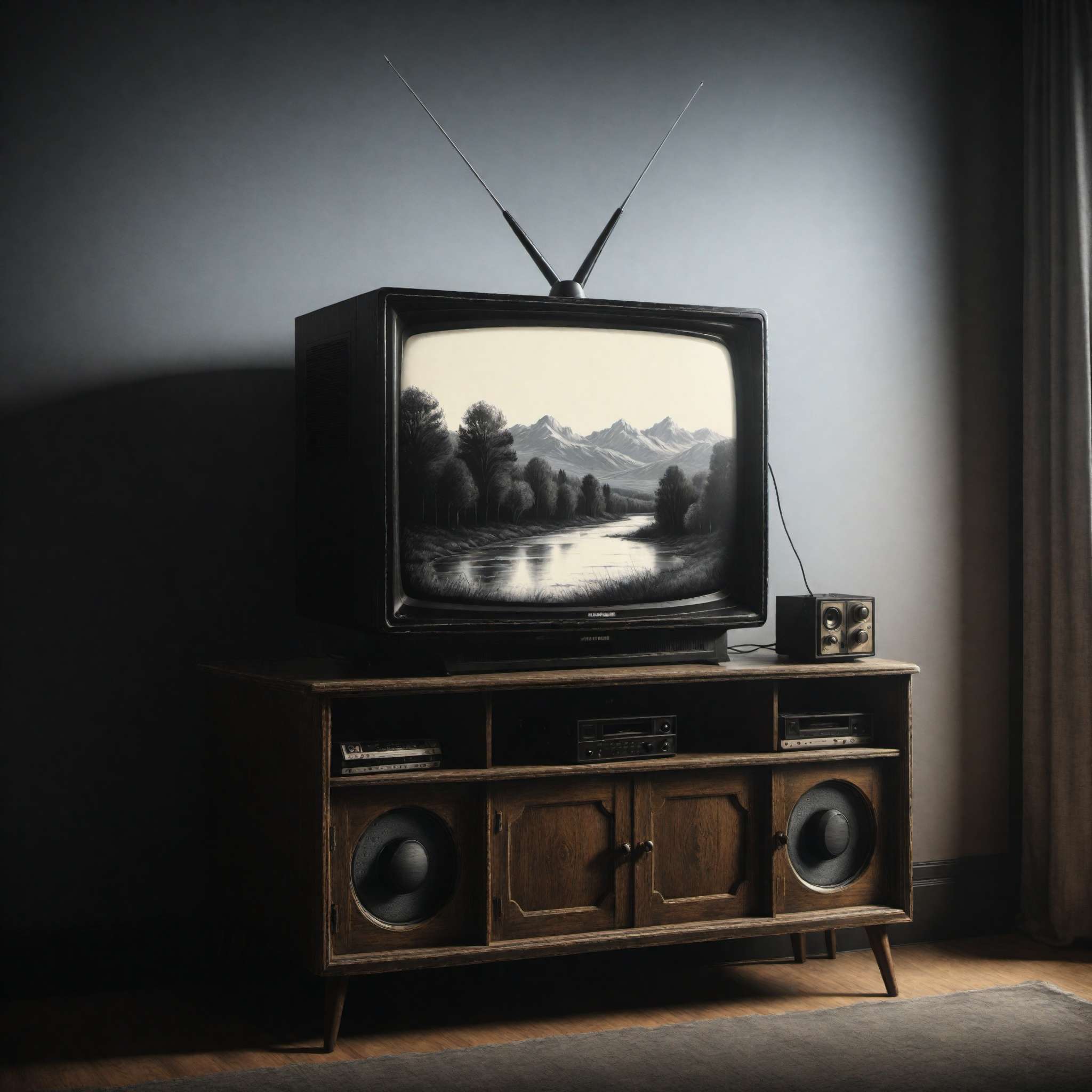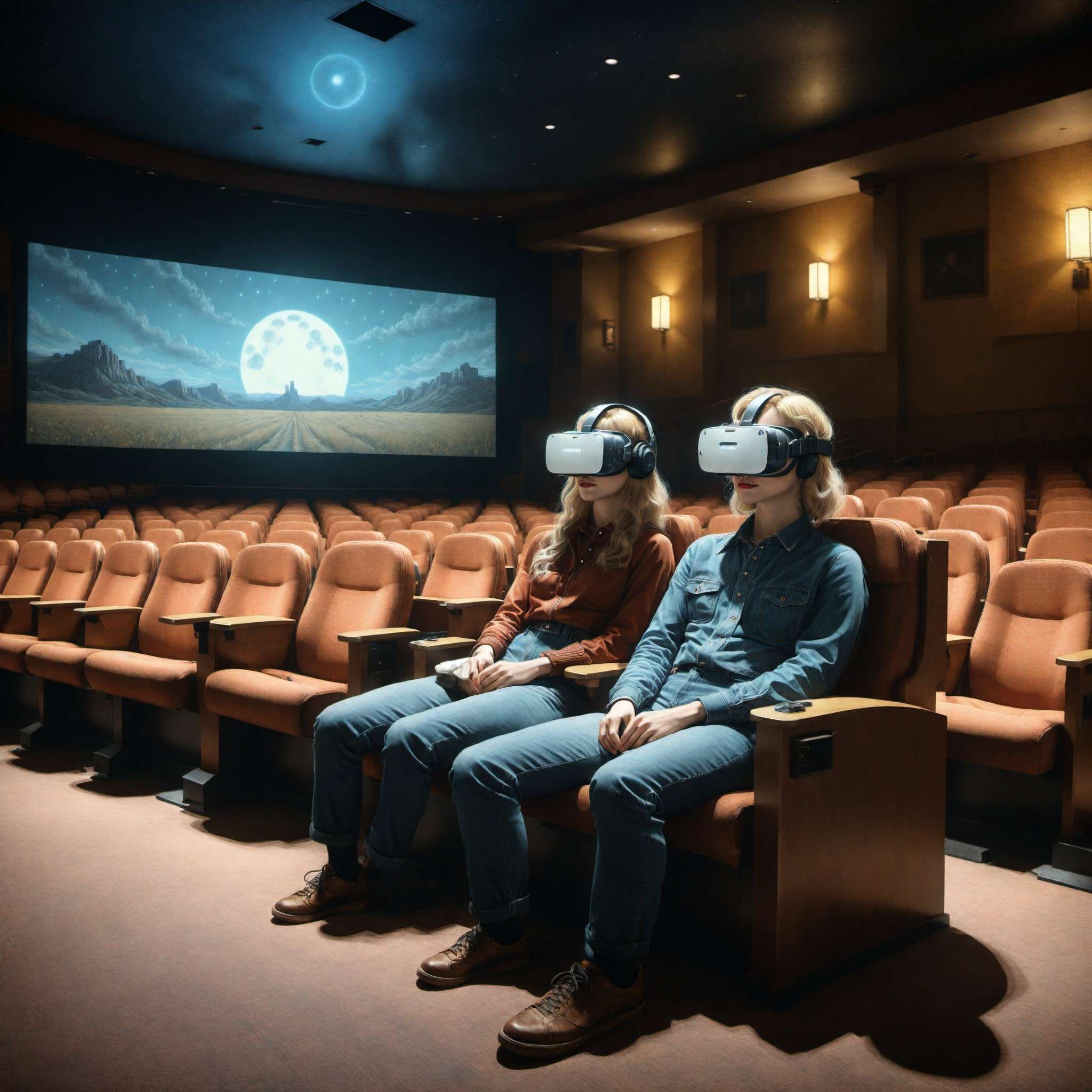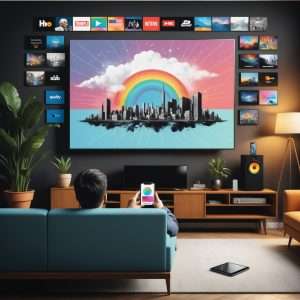Zombie Bunny is Reader-supported and may earn an affiliate commission through links on our site.

From Silver Screen to Home Screen: The Changing Landscape of Film Viewing
Explore how the film industry has transformed as cinema viewing transitions to home screens, driven by technology, streaming platforms, and COVID-19's impact.
The transition from cinema to home viewing has revolutionized the film industry, reshaping our film viewing habits. As convenience and instant access take precedence, streaming platforms like Netflix and Amazon Prime are transforming the silver screen into a home screen phenomenon. This blog explores the cultural shift in film viewing, driven by technological advancements, the COVID-19 pandemic, and evolving viewer preferences. Learn about how the rise of home viewing technologies, the impact of streaming platforms, and the future of cinema halls are all contributing to this transformative era in film consumption. Discover how the industry is adapting and what the future may hold for both cinema and home viewing experiences.
Introduction: A Tale of Two Screens

© Copyright , ZombieBunny.Org
Understanding the shift from cinema to home viewing
The transition from silver screen to home screen is a cultural phenomenon that has significantly reshaped the film viewing experience. It’s a shift that reflects our evolving lifestyle choices, where convenience and instant access are prioritized. Going to the cinema was once an event, an outing embedded with a sense of community. It was about more than just the film; it was the atmosphere, the shared laughter and gasps, and the echoing applause.
However, with the advent of new technologies, we’ve seen a steady migration from these communal viewing experiences to more personalized ones. As streaming platforms like Netflix and Amazon Prime offer a vast library of films at our fingertips, the need to venture outside for a movie has diminished. This shift has been further accelerated by the COVID-19 pandemic, causing many of us to retreat to the comfort and safety of our homes for entertainment.
The role of technology in film viewing changes
Technology has played an instrumental role in the transformation of film viewing habits. It has not only changed where we watch films but also how we watch them. In the past, cinema was the only place where we could experience high-quality, widescreen film viewing. However, with advancements in home theater systems, we can now recreate a similar experience within our living rooms. High-definition televisions, soundbars, and Blu-ray players have elevated home viewing to near cinema-quality.
In addition, the rise of streaming platforms has further revolutionized the way we consume films. These platforms offer us the luxury of choice and convenience, allowing us to watch what we want, when we want, and how we want. They’ve turned film viewing into an on-demand service, breaking away from the traditional cinema schedule. With such technological advancements, the shift from the silver screen to the home screen has been inevitable and transformative.
The impact of the COVID-19 pandemic on film viewing
The COVID-19 pandemic has undeniably accelerated the shift from cinema to home viewing. With theaters worldwide closing their doors due to safety measures, the film industry has had to adapt rapidly. Streaming platforms have become a lifeline for the industry, releasing new films directly to home viewers. These platforms have recorded a surge in subscriptions, as home-bound audiences seek entertainment and comfort in films during these challenging times.
Moreover, the pandemic has also prompted a change in our viewing habits. The concept of ‘binge-watching’ has become more prevalent, with viewers consuming entire seasons or multiple films in one sitting. These changes, driven by the unique circumstances of the pandemic, have further solidified the importance of home viewing. While cinemas will always hold a special place in the world of film, it’s clear that the home screen has become a dominant player in the changing landscape of film viewing.
The Golden Era of Cinema: A Thing of The Past?

© Copyright , ZombieBunny.Org
An overview of the golden era of cinema
The golden era of cinema, often referred to as Hollywood’s ‘Golden Age’, was a period of unprecedented creativity and financial success in the film industry. From the 1930s to the mid-1960s, cinema was the primary source of entertainment, with movie houses packed to the rafters. This era gave birth to many cinematic classics and saw the rise of iconic film stars who are still revered today.
Movies were an integral part of society, a shared experience that brought people together. It was a time when cinema was not merely a place to watch films, but a destination for a night out, a date, or a family outing. It was an era defined by glamour, large cinema halls, and the magic of the silver screen. This period laid the foundation for what we know as cinema today, shaping our expectations and standards for film viewing.
The decline of traditional cinema viewership
Over the past few decades, traditional cinema viewership has seen a steady decline. The reasons for this are manifold. For one, the rise in ticket prices and the cost of concessions have made a trip to the cinema a more expensive outing. Moreover, the proliferation of home entertainment options, from satellite TV to DVDs and now streaming services, have made staying in to watch a movie more appealing.
The shift towards home viewing has been further fueled by the convenience and flexibility it offers. With the advent of streaming platforms like Netflix, Amazon Prime, and Hulu, viewers can now watch a plethora of films and TV shows at their own pace, without the constraints of cinema schedules. These changes in the film viewing landscape have resulted in fewer people visiting the cinemas, signaling a decline in traditional cinema viewership.
The rise of home viewing and streaming services
In contrast to the decline of traditional cinema viewership, home viewing has significantly risen, largely due to the emergence of streaming services. Platforms like Netflix, Amazon Prime, and Hulu have revolutionized the way we consume films. With a vast library of films and TV shows across various genres, they offer viewers unparalleled choice and flexibility.
Streaming services have made film viewing an on-demand experience, allowing viewers to watch their favorite films and shows whenever and wherever they want. Moreover, these platforms have also become a hub for exclusive content, attracting viewers with their original films and series. The ease, convenience, and affordability of these platforms have made them a popular choice among viewers, leading to a significant rise in home viewing. As a result, the home screen has steadily become the new silver screen in the changing landscape of film viewing.
The Transformation of Home Viewing: A Tech Revolution

© Copyright , ZombieBunny.Org
Evolution of home viewing technologies
The evolution of home viewing technologies has been transformative, significantly enhancing our film viewing experience. In the early days, black and white televisions and VHS tapes were a staple of home viewing. However, the arrival of DVDs and high-definition TVs brought a major upgrade, offering better picture and sound quality.
The real game-changer, however, has been the advent of streaming technologies. Devices like Chromecast, Amazon Fire Stick, and Smart TVs have made it possible to stream films directly on our televisions, eliminating the need for physical media. Furthermore, the rise of 4K Ultra HD TVs and soundbars has brought cinema-like quality to our living rooms. These advancements in technology have not only improved the quality of home viewing but also made it more convenient and flexible, contributing to the shift from the silver screen to the home screen.
The role of internet and streaming platforms
The internet and streaming platforms have played a pivotal role in the transformation of film viewing. Prior to their advent, home viewing was limited to what was available on cable TV or physical media like DVDs. However, the internet has opened up a world of possibilities, offering us access to a global library of films at the click of a button.
Streaming platforms like Netflix, Amazon Prime, and Hulu have capitalized on this, offering an extensive range of films and TV shows that can be streamed instantly. They’ve turned film viewing into an on-demand experience, free from the constraints of schedules and geographical boundaries. Moreover, these platforms have also become a space for innovative content, releasing their own original films and series. The role of the internet and streaming platforms in the evolution of film viewing cannot be overstated. They’ve fundamentally changed how, where, and what we watch.
The impact of home viewing on film industry
The rise of home viewing has had a profound impact on the film industry. Firstly, it has altered the distribution model of films. With streaming platforms gaining popularity, many filmmakers are opting to release their films directly online, bypassing the traditional cinema route. This has resulted in a significant increase in the production of films and series intended for online release.
Secondly, home viewing has also changed the way films are made. As filmmakers cater to audiences who are likely to consume content on smaller screens, certain cinematic elements are being adjusted. For instance, storytelling techniques, visual aesthetics, and sound design are being adapted to suit home viewing environments.
Finally, the rise of home viewing has also led to a shift in power dynamics within the industry. Streaming platforms have emerged as powerful players, often competing with traditional studios for top talents and projects. This shift towards home viewing has reshaped the film industry, influencing everything from production to distribution.
The Future of Film Viewing: Where Are We Heading?

© Copyright , ZombieBunny.Org
Predicting the future of cinema halls
Predicting the future of cinema halls in the face of the home viewing revolution can be challenging. However, it’s safe to say that they will likely need to adapt to survive. Cinemas may have to offer more than just films to draw audiences. This could mean providing a more immersive and unique viewing experience that can’t be replicated at home. Examples could include high-end sound and visual systems, comfortable and luxurious seating, or even offering dining options.
Furthermore, cinemas may also become venues for special events, like film festivals, premieres, or live interactive experiences. They could also serve as communal spaces where fans can gather for the release of highly anticipated films or series. While the golden era of cinema may be in the past, cinema halls can still hold a significant place in the film viewing landscape by evolving and adapting to changing viewer preferences.
Emerging technologies in home viewing
The future of home viewing is set to be shaped by emerging technologies, promising to enhance our film viewing experience further. One such technology is virtual reality (VR), which can provide a more immersive viewing experience. With VR, viewers can step into the world of the film, exploring it in 360 degrees. This could revolutionize the way we consume films, making it a more interactive experience.
Another emerging technology is Artificial Intelligence (AI). AI is already being used by streaming platforms to provide personalized recommendations based on viewers’ watching habits. However, its role could expand to include features like interactive storytelling, where viewers can influence the plot or characters in a film.
Moreover, advancements in screen and sound technologies are also on the horizon, promising to bring cinema-like quality to our living rooms. These emerging technologies are set to redefine home viewing, making it more immersive, personalized, and interactive.
The potential impact of these changes on film making
The ongoing changes in film viewing, driven by technological advancements and shifting viewer preferences, will inevitably impact film making. As home viewing becomes the norm, filmmakers will need to adapt their storytelling techniques to suit smaller screens. This could mean a shift in visual aesthetics, sound design, and even narrative structures.
Moreover, the rise of interactive technologies like VR and AI could lead to a new form of filmmaking, where viewers can influence the plot or characters. This would require filmmakers to think beyond the linear narrative and explore multiple story paths.
Lastly, the increasing power of streaming platforms could also influence the type of films that are made. As these platforms compete for viewers, there could be a greater demand for diverse and niche content, leading to a broader range of stories being told. These changes present both challenges and opportunities for filmmakers, pushing them to innovate and adapt in the ever-evolving landscape of film viewing.
Conclusion: Merging of Old and New

© Copyright , ZombieBunny.Org
Summarizing the shift from cinema to home viewing
The shift from cinema to home viewing is a significant cultural shift that has reshaped the film viewing landscape. It’s a shift driven by evolving viewer preferences, technological advancements, and more recently, the global pandemic. Once, the cinema was the hub of film viewing experiences, a place for communal enjoyment and shared experiences. However, with the rise of home viewing technologies and streaming platforms, the home screen has become the new silver screen.
These platforms offer an unlimited library of films at our fingertips, providing us with the convenience and flexibility to watch what we want, when we want. Moreover, they’ve also become a breeding ground for innovative content, releasing their own original films and series. This shift from the silver screen to the home screen has not only transformed how we consume films but also the film industry itself, influencing everything from production to distribution.
The lasting impact of cinema on the film industry
Despite the shift towards home viewing, the impact of cinema on the film industry is undeniable and lasting. The cinema has been the birthplace of numerous iconic films and stars, setting the standards for storytelling, performance, and production values. It has also been a space for shared experiences, fostering a sense of community among film lovers.
Even as home viewing becomes mainstream, the unique experience that cinema offers can never be fully replicated at home. The big screen, the immersive sound, the collective gasps and laughter – these are elements that make cinema viewing special. Furthermore, cinemas also play a crucial role in the release of big-budget films, often serving as a gauge for a film’s success.
Thus, while the mode of film viewing is evolving, the influence of cinema on the film industry continues to be significant. It remains a vital part of the film viewing ecosystem, co-existing with home viewing in this changing landscape.
The future of film viewing and cinema
Looking ahead, the future of film viewing appears to be a balance between the old and the new. On one hand, home viewing, driven by streaming platforms and technological advancements, will continue to play a significant role. It offers convenience, flexibility, and a vast library of content that caters to diverse viewer preferences. The adoption of emerging technologies like VR and AI could make home viewing even more immersive and personalized.
On the other hand, cinemas will likely continue to hold a special place in the film viewing landscape. They offer a unique, communal experience that can’t be fully replicated at home. To stay relevant, cinemas may need to evolve, providing more immersive experiences, hosting special events, or even integrating with streaming platforms.
In essence, the future of film viewing and cinema is not a matter of either/or. Instead, it’s about finding a balance, where both can co-exist and complement each other in enriching our film viewing experiences.
Please support our site and purchase something from our store.







